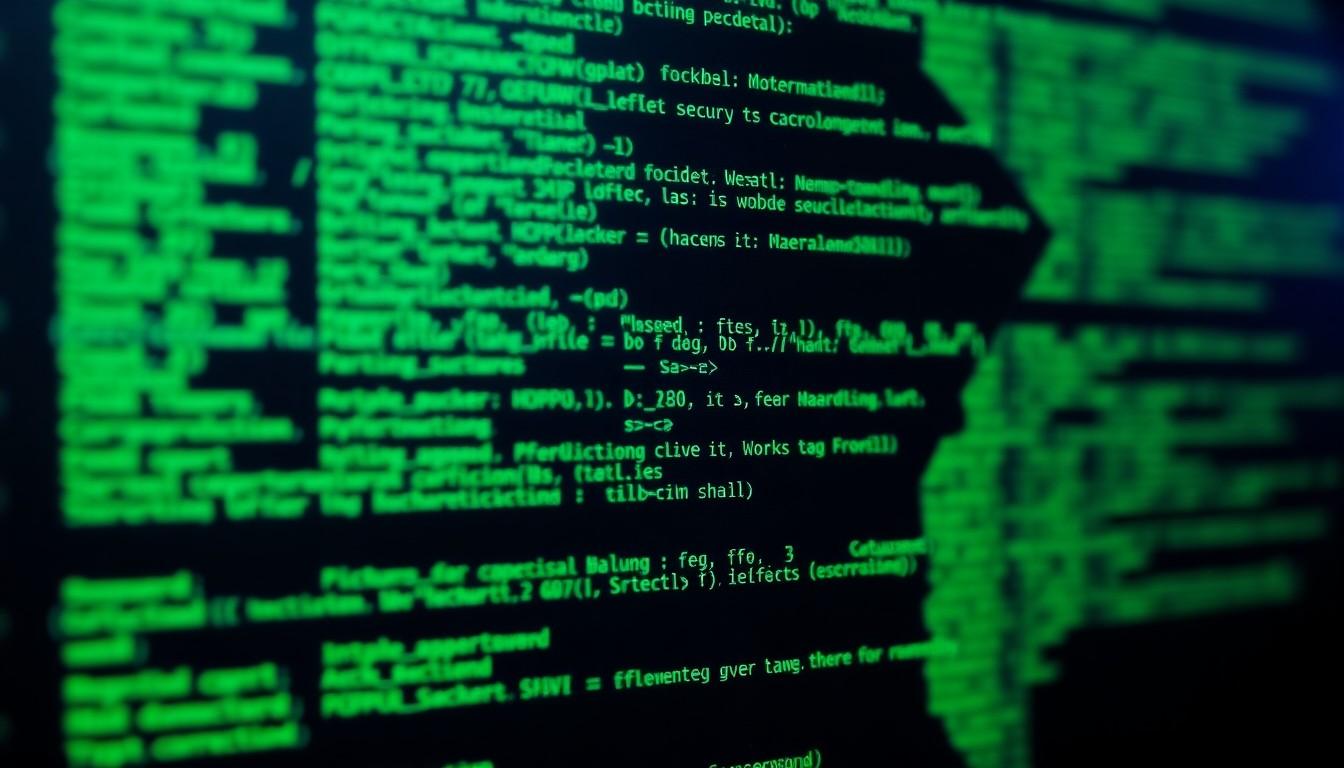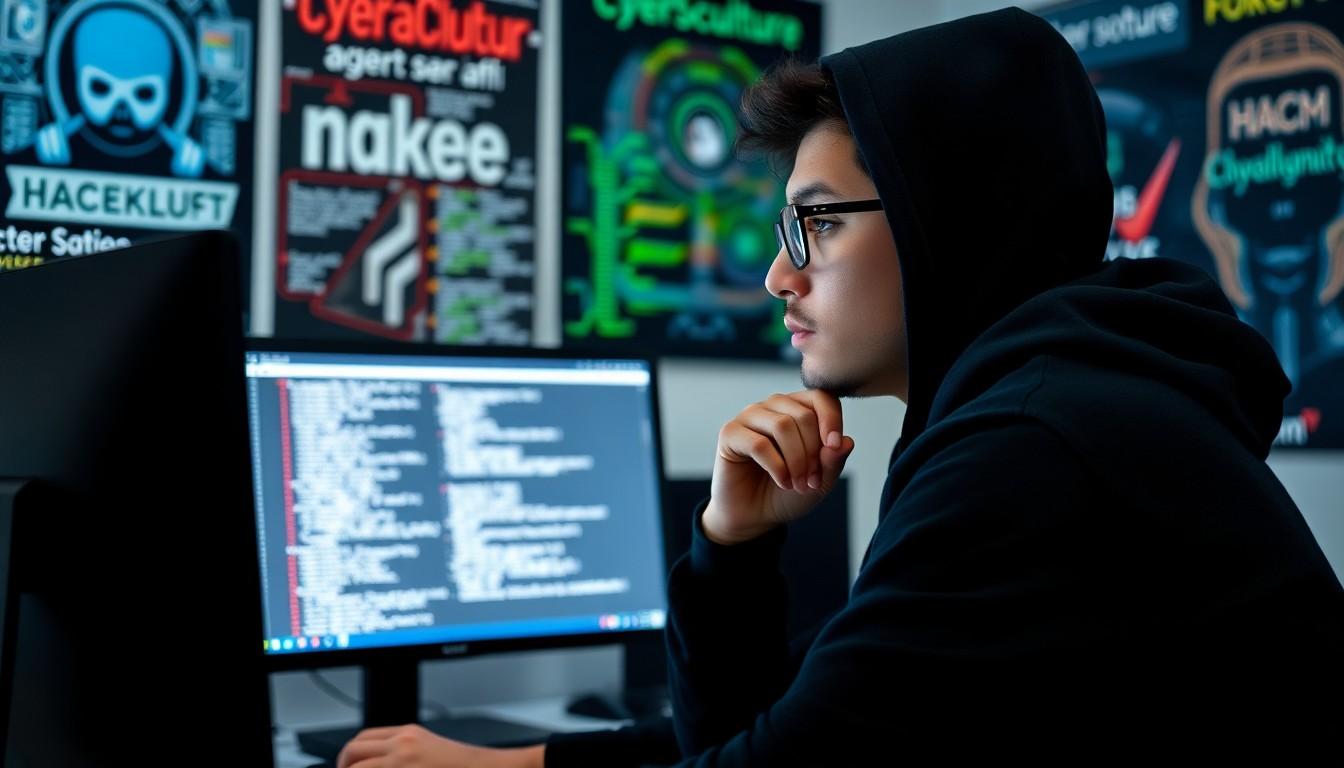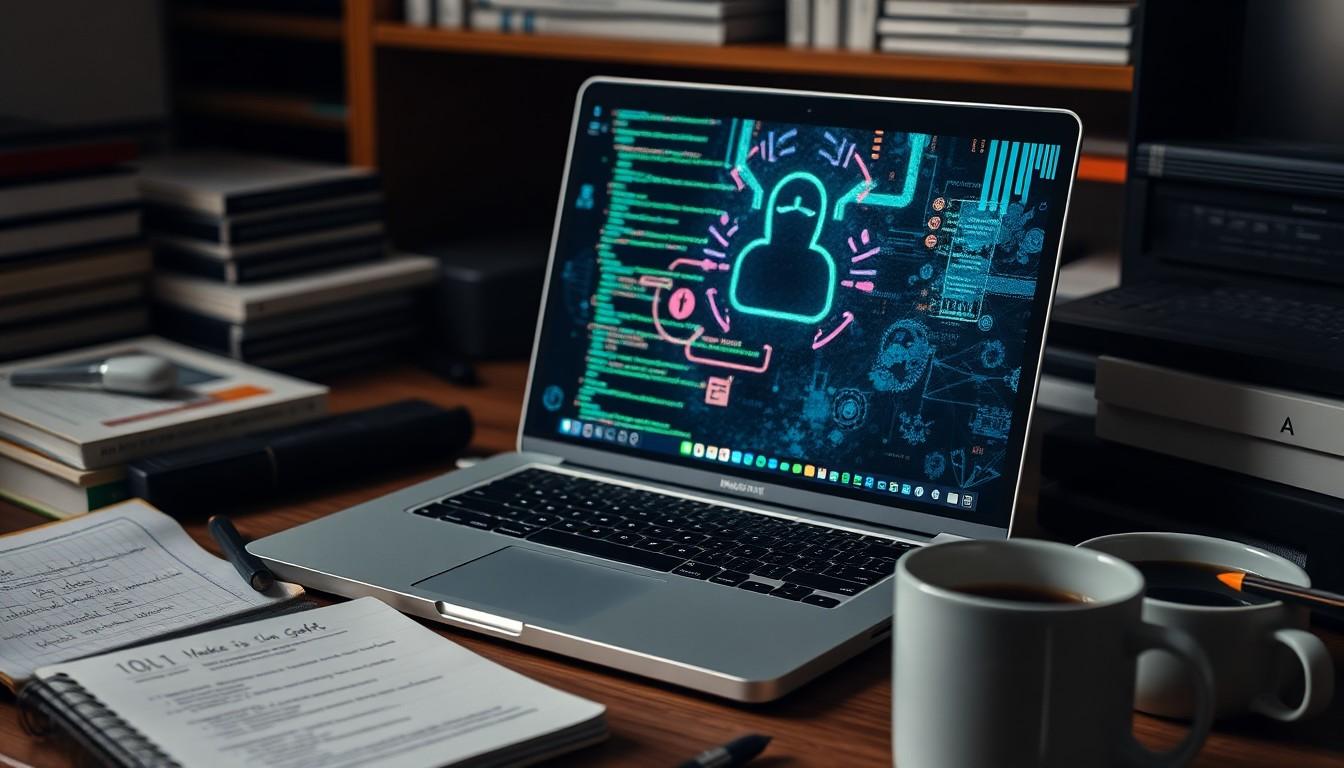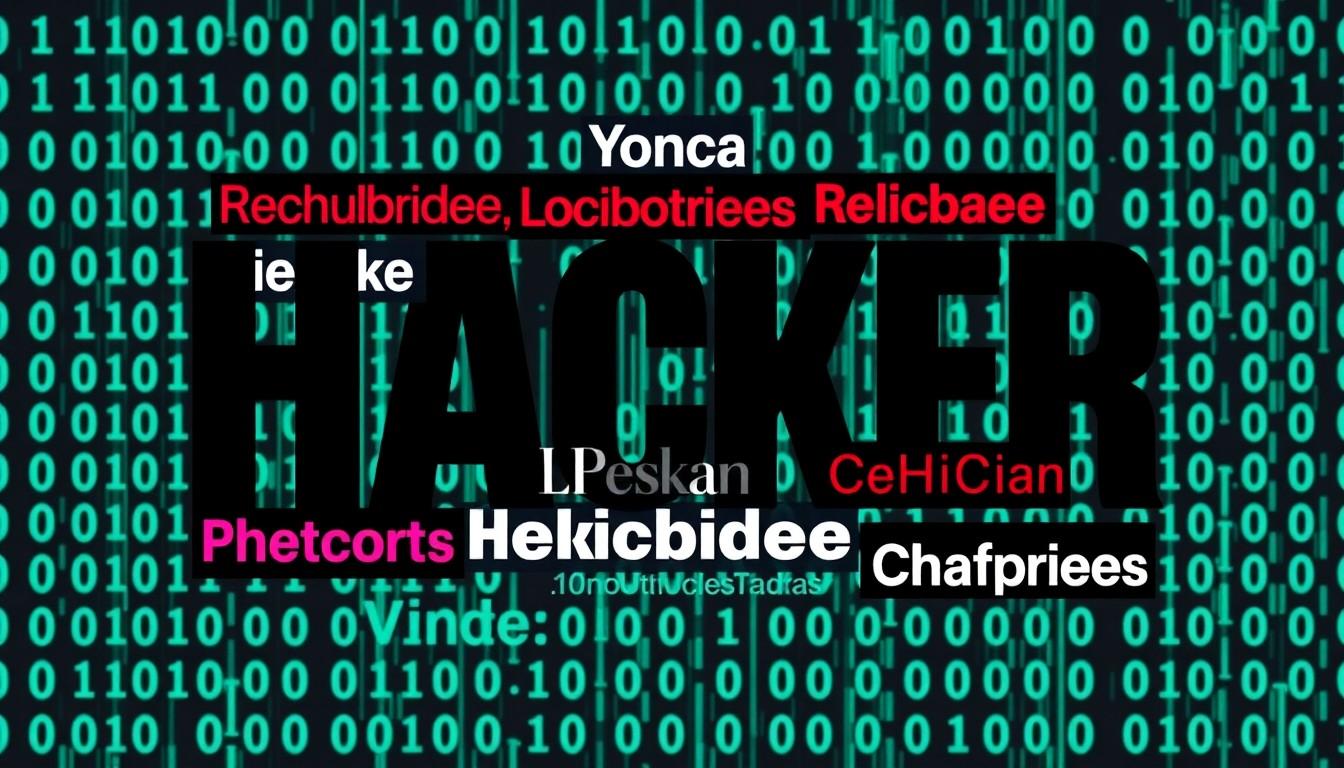We all know that first impressions matter and in the digital industry nothing says more about us than the username we choose. For hackers a username isn’t just a label—it’s a badge of identity a secret handshake and sometimes even a legend in the making. The right hacker username can open doors build reputations and spark curiosity in ways few other things can.
Whether we’re diving into online communities or leaving our mark on the code we write our username sets the tone. It’s our calling card and the first thing others notice. Let’s explore how the perfect hacker username can help us stand out get noticed and maybe even become unforgettable in the industry of cybersecurity.
Understanding Hacker Usernames: What Sets Them Apart
We see that hacker usernames always go beyond just being a catchy handle. Each name shapes perception and signals skill, with elements that aren’t found in everyday usernames. These names often blend creativity and technical jargon for a unique impact. Sometimes, we notice how references to coding languages, famous hacks, or cybersecurity terms make a username pop in forums and networks.
Choosing words that spark curiosity keeps people remembering the name. Expect clever puns, inside jokes, or subtle nods to hacker culture tucked in. By avoiding obvious clichés, we keep the username original and push it ahead of the crowd. Patterns using alternating capital letters or numbers in place of letters help make these usernames feel exclusive.
Every hacker name feels intentional. Incorporating things like meaningful numbers—such as 1337 for “leet”—or symbols tied to legacy groups gives the username depth. This form of self-expression lets us signal experience or allegiance, setting us apart in digital communities. Eventually, the username becomes more than just a label; it marks our role and reputation in the ever-evolving hacker network.
Exploring the Origins of Hacker Usernames

Our understanding of hacker usernames starts with their deep roots in hacker culture, stretching back to the origins of digital communities. Let’s see how history shaped these names and how pop culture influenced their creativity.
Historical Influences on Hacker Usernames
People in the early hacker scenes at MIT and other institutions began using pseudonyms in the 1960s and 1970s. Hackers needed anonymity to protect themselves as they explored and modified computer systems, often pushing legal and social boundaries. Handles soon became more than a mask for safety—they turned into marks of individuality and rebellion against authority. We see this with famous names like “Condor,” Kevin Mitnick’s handle, which became legendary for its skillful defiance. Early hackers used their usernames not just to hide, but also to proudly display their technical prowess and leave behind personal signatures in code and online forums.
Pop Culture References in Hacker Usernames
Creativity flourished in hacker usernames as references from pop culture—like movies, books, and historical figures—started to influence choices. Pseudonyms often reflected personal interests or values, serving as clever inside jokes or nods to favorite stories and icons. Sometimes, these references made usernames feel like badges of belonging within certain hacker subgroups, especially those who shared a love for science fiction or fantasy. Personal symbolism intertwined with pop culture, making each username memorable and unique while signaling shared identity within the hacker community.
Recognizing Common Themes in Hacker Usernames

Spotting certain patterns in hacker usernames helps us identify their tactics and priorities. Let’s look at a few recurring elements that signal a hacker’s background or intent.
Leetspeak and Alphanumeric Variations
Plenty of hacker usernames rely on leetspeak, swapping letters for numbers or symbols to dodge detection. Something like “admin” often appears as “4dm1n” or “adm!n” in breach attempts. We commonly see “e” swapped for “3” or “a” changed to “4,” making even basic names look unique. Many automated attacks factor in these leetspeak tricks, so even clever variations like “t3st” or “gu3st” usually end up on common attack lists. Mixing numbers and symbols is supposed to boost complexity, but research confirms that dictionary scripts already target these simple tweaks.
References to Technology and Coding
Hacker usernames frequently showcase a passion for coding or specialized tech knowledge. Our analyses notice a strong presence of database-related names like “mysql” and “oracle,” signaling expertise or targeting preferences. We also find nods to coding skills with names pulling from languages or tools—like “root,” “administrator,” and “user”—all popping up in brute force attacks. Often, hackers add humor or irony, referencing inside jokes from programming culture or famous cyber incidents. Such usernames serve as digital badges, showing off skills or allegiances to the broader hacker community.
Identifying Popular Types of Hacker Usernames

When we explore hacker usernames, we find clear trends that show personality and intent. Let’s look at the most common styles we notice across the community.
Anonymous and Pseudonymous Handles
Sometimes we see usernames that protect the user’s identity and offer an air of intrigue. Handles like ShadowCoder, PhantomByte, or GhostInTheWires appear everywhere in hacker forums. Others such as CipherPhantom and TechnoSavant signal expertise while keeping true names secret. These pseudonymous choices help users create a distinct online persona, often tied to their technical skills and mysterious reputations.
Humorous or Ironic Usernames
Plenty of hackers use humor or irony to stand out and make connections. Names such as ByteN1nja and Glitch_H4cker get a laugh or at least a smirk when we see them in chat. Handles like ByteBandit, CodeCrusader, and BinaryBlitz add playfulness to community conversations. Many times we find that a username like this actually helps the user build rapport and become memorable in a crowded space.
Dark or Edgy Username Styles
Quite a few hackers prefer usernames packed with an intense or threatening vibe. We notice names like Root_Access and DarkWebSt0rm that reference high-level permissions or hidden online worlds. Handles such as Trojan_Rogue, Silent_H0rnet, Malwar3M4nipul8or, CyberVortex, CipherWraith, and DataWraith all use cybersecurity terms and leetspeak to reflect danger or power. People in this category tend to lean into the culture of risk and rebellion that hacking can represent.
Creating Your Own Hacker Username: Tips and Ideas

Let’s talk about building a hacker username that’s unique and memorable. We want something creative, safe, and inspired by hacking culture without exposing our personal info or being easy to guess. Here’s how we can do it.
Combining Words and Numbers Creatively
Mixing random words with numbers is a proven way to increase both uniqueness and security. We could pick two unrelated things—like a city and an animal—and tack on digits, ending up with usernames such as BerlinFalcon82 or NeonOtter158. Numbers shouldn’t match any part of our birthdate, phone, or lucky numbers. These combos help us dodge personal info leaks, making it tougher for anyone to guess or track us. Patterns like alternating capitals or throwing in random consonant clusters add a techy edge, for example, SkyW4lk3rB1t stands out while staying impersonal.
Drawing Inspiration from Hacking Culture
Grabbing ideas from cybersecurity and hacker lingo amps up our credibility without putting us at risk. We could twist rare cybersecurity terms, tech jargon, or hacker metaphors, creating usernames like ShadowProxy7 or HashPulse404. Avoiding famous hacker names ensures we don’t draw unwanted attention. Using abstractions—maybe obscure script names, encryption terms, or classic code references—keeps the name both clever and mysterious. Subtle nods to culture, like ZeroDayPixel or CipherPhantom, help us fit in with online communities while staying safe and original.
Avoiding Common Mistakes with Hacker Usernames

Picking the right hacker username is about more than looking cool—it’s crucial for staying safe and building our reputation. Let’s break down two big mistakes we all need to avoid.
Protecting Anonymity and Privacy
Steering clear of personal details in our usernames keeps us anonymous. We never want to use names, nicknames, or info that someone could tie back to us. It’s easy for attackers to guess a username if it matches data that’s public, like our birthdays or favorite sports teams. Using random words or abstract terms in our handle gives us an edge, helping us dodge scripts that hunt for easy targets. The more unique and complex we make our username, the less chance anyone has to connect it with who we are or what we do.
Avoiding Overused or Generic Names
Hackers everywhere try common usernames first—“root,” “admin,” and “test” show up in almost every attack script. It’s shocking, but a study found that the top 10 most-targeted usernames include “guest,” “info,” and “user” as well, making our accounts easier to breach if we use them. Mark Burnett’s research also revealed that millions of leaked usernames often follow these common patterns. If we pick something like “abc123” or anything easy to guess, dictionary attacks will target us next. We have to dodge these traps by inventing unique combinations, adding numbers, symbols, and avoiding any pattern that’s been exposed in data breaches. Choosing something totally new and not related to our password stops attackers who try username-password combos—more than 40% of breaches happened that way.
Famous Hacker Usernames Throughout History

Some hacker usernames have become legendary, both for their technical exploits and their impact on digital culture. Let’s look at the best-known handles in both reality and fiction.
Notable Real-Industry Hacker Handles
Plenty of real hackers turned their usernames into internet folklore. Mark Abene picked “Phiber Optik” and built his legacy with Masters of Deception, one of the most influential hacker groups of the 1980s. Ryan Ackroyd chose “Kayla” while working with LulzSec, shaking up headlines with coordinated cyberattacks. Mustafa Al-Bassam, as “Tflow,” played a crucial role in LulzSec’s rise and then contributed to cybersecurity advancements. Julian Assange went by “Mendax” long before WikiLeaks, making waves in early hacker circles.
We also remember Andrew Auernheimer, better known as “weev,” for his bold hacks and online activism. John Draper found fame using the name “Captain Crunch” after realizing that a toy whistle from the Cap’n Crunch cereal could manipulate phone systems with its exact 2600 Hz tone. George Hotz, aka “geohot,” broke new ground by jailbreaking the iPhone and hacking the PlayStation 3. Jeremy Hammond made headlines as “Anarchaos,” exposing corporate secrets through his digital campaigns.
Adrian Lamo earned the label “The Homeless Hacker” as he breached giants like Yahoo and The New York Times, often alerting them to their security flaws afterward. Albert Gonzalez, who called himself “soupnazi,” orchestrated some of history’s largest credit card thefts. Kevin Mitnick’s handle “Condor” became synonymous with social engineering as he evaded authorities for years and infiltrated high-security networks. Gary McKinnon operated under “Solo,” hacking U.S. military networks to chase conspiracy theories. Kevin Poulsen, known as “Dark Dante,” left his mark by seizing control of phone networks to win radio contests and outsmart authorities.
Iconic Fictional Hacker Usernames
Fictional hackers helped shape pop culture’s view of the scene, and their handles stand out just as much. Acid Burn and Zero Cool, characters from the classic film “Hackers,” still inspire new hackers with their iconic names and larger-than-life digital personas. Neo, while not a traditional hacker, became a symbol of cyber rebellion in “The Matrix,” blending hacking with questions about reality and freedom.
Media icons like these affect real-industry username trends, pushing hackers to create bolder and more imaginative online identities that blend fiction and reality in the hacker community.
Conclusion
Choosing a hacker username isn’t just about picking something cool—it’s about crafting an identity that speaks to our skills, values, and place within a unique community. As hacker culture continues to grow and evolve, our usernames will keep serving as digital signatures that set us apart.
Whether we’re joining a new forum or building our reputation in cybersecurity, the right handle can open doors and spark curiosity. Let’s make sure our usernames reflect both our creativity and our respect for the culture we’re part of.
Frequently Asked Questions
Why is choosing the right hacker username important?
Choosing the right hacker username is crucial because it acts as your online identity, shaping how others perceive you in the digital and cybersecurity communities. A unique and memorable username sets you apart, reflects your skills or interests, and can help establish your reputation or foster curiosity in hacker circles.
What makes a hacker username different from a regular username?
Hacker usernames are distinct due to their creativity, use of technical jargon, leetspeak, and references to hacker culture. They often include subtle puns, numbers, or symbols, and may hint at skills, expertise, or allegiance, making them both memorable and meaningful within the community.
How did hacker usernames originate?
Hacker usernames originated in the 1960s and 1970s when early hackers used pseudonyms to maintain anonymity while exploring computers. These handles soon became symbols of individuality and rebellion, influenced by both real-life achievements and pop culture references, helping foster a unique hacker identity.
What are common themes in hacker usernames?
Common themes include references to technology, coding languages, cybersecurity terms, leetspeak, humor, and irony. Many usernames incorporate inside jokes or subtle nods to hacker culture, making them both unique and meaningful while signaling expertise and a sense of belonging.
What styles of hacker usernames are most popular?
Three main styles dominate: anonymous or pseudonymous handles for privacy and expertise, humorous or ironic names to connect with others, and dark or edgy usernames that evoke intensity or advanced technical skills. Each style helps hackers create a distinctive online persona.
How can I create a unique and memorable hacker username?
Combine random words with numbers, like a city and an animal plus digits, to enhance uniqueness and security. Draw inspiration from hacker culture, use subtle references, and avoid personal info. Clever, abstract combinations are best for standing out while protecting anonymity.
What mistakes should I avoid when choosing a hacker username?
Avoid using personal information, common usernames like “admin” or “guest,” and predictable patterns. Overused or generic names are often targeted by attackers. Opt for unique, abstract combinations that protect your privacy and reduce security risks tied to username-password breaches.
Who are some famous hackers with notable usernames?
Famous hacker handles include “Phiber Optik,” “Kayla,” and “Mendax,” known for significant contributions to cybersecurity. Fictional characters like Acid Burn and Zero Cool from movies also influence trends, inspiring new users to pick creative, distinctive usernames within hacker culture.







